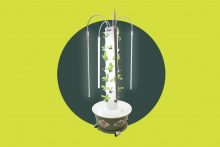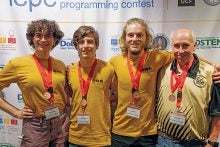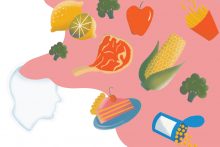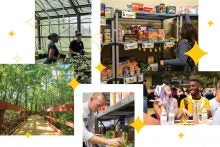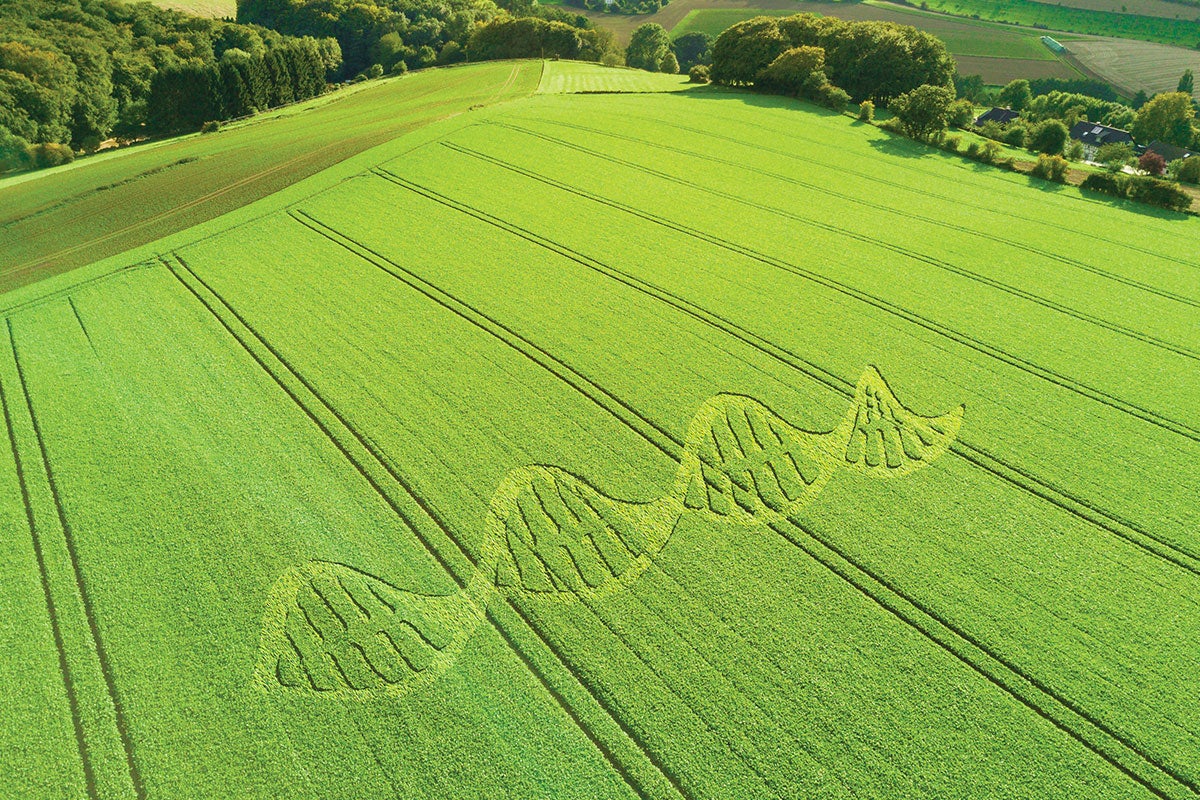
The subject is touchy, to put it mildly. It stokes trepidation among writers and the foremost experts on the subject. And so, to introduce the topic of this story, we leave it to a rideshare driver: Anthony. He’s impartial, the product of an Italian upbringing and an American education. During a 10-minute ride he talks about Olympic sports, World War II, family, and the importance of patience when cooking pasta and eating it.
“In general, people in Europe are healthier because they eat slower,” Anthony says, right before he drops the three-letter bomb. “They also don’t eat GMOs.”
There. The driver said it first. GMOs. Genetically modified organisms. He admits he doesn’t know much about them, only that he’s heard they’re unhealthy. It’s an opening for his passenger.
“I’ve heard the same things,” the passenger says. “But I’ve heard other perspectives, too. Some say GMOs might be an answer for world hunger.”
Anthony listens intently. The passenger asks what he thinks of the next-level science of clustered regularly interspaced short palindromic repeats.
“Never heard of it,” Anthony says.
“It’s CRISPR. Have you heard of CRISPR?” the passenger says.
“Oh, that,” Anthony says. “It sounds scary, but I need to learn more.”
We should be able to have open conversations like this outside Anthony’s Camry, but the very mentions of GMOs and CRISPR often stir up emotions and resistance.
“It’s a complex topic,” says Houman Sadri, associate professor of political science and founder of the UCF Model United Nations program. He has an interesting family background and an open mind. “The more I learn about GMOs and food, the more questions I have.”
The questions often pivot to politics, ethics and the environment. While those are important discussions, something crucial is often missing from the discussion: science. If we’re to get anywhere meaningful, that’s where this conversation needs to turn.
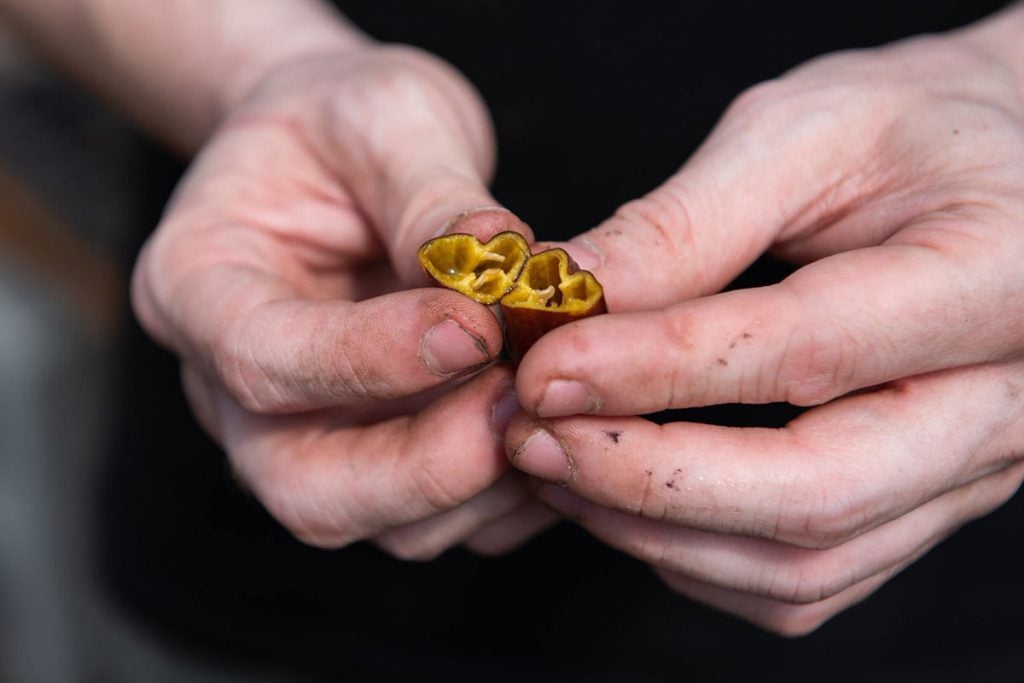
Mixing Science with Food
Take a breath, and digest this basic truth: Science has been at the heart of food production for as long as plants have grown from the ground. As plant biologists like to say, “Science doesn’t make food less natural.”
Food scientists are no more nefarious than people who’ve been genetically enhancing plants on farms and in backyards without realizing it. If a vine produced good fruit, you’d remove the poor performers and surround the productive vine with more vines to phase in the best family traits. The banana is an oft-cited example. Its ancestors were green, hard and had to be cooked — basically, plantains. A Jamaican farmer came upon yellow bananas growing on his land in the early 1800s. He found them sweet and easy to peel, so he turned an accidental mutant into a field of what we now eat by the billions worldwide.
Simply put, plants evolve. With bananas, it happened over time. Crossbreeding (a sweet orange + a pomelo = grapefruit) speeds up the process. Gene modification (nonbrowning apples) speeds it up even more. Now imagine using genetic modification for something more significant than developing bizarre fruits — like, human survival.
“With science, we can mine for meaningful information in the DNA and use it to increase yields with fewer external inputs,” says UCF Associate Professor of Biology Chase Mason.
Mason grew up in a small town surrounded by farms and classmates who qualified for reduced-cost lunches. He thinks about those students when he walks through a garden full of sunflowers that he calls “silent aliens.” While he doesn’t conduct GMO or CRISPR research, he does use the flowers to explore the secrets of why they’re able to grow in ecosystems as varied as sand dunes, wetlands and mountain forests. He might find tucked into their DNA a defense mechanism they’ve developed to ward off beetles or fungi. Theoretically, if someone could replicate those mechanisms in food-bearing plants, then just think of the outcomes: Plants could produce through droughts, floods, extreme weather and armies of insects — without the need for irrigation or pesticides.
“But you couldn’t crossbreed those traits from sunflowers to a different crop, like peppers,” Mason says. “One would need to take the GMO or CRISPR approach.”
Simply put, the GMO approach is adding or removing a gene to increase the likelihood of certain characteristics, like pest resistance, drought resilience or flavor. The CRISPR approach is more precise, where changing a single letter in the genetic code all but guarantees a desired result in a short amount of time.
One adjustment could allow an entire crop to survive an otherwise deadly disease.
Some plants have done this on their own. Lemons developed limonoids, which produce their strong scent as a mechanism to deter insects. Coffee beans use caffeine as an internal insecticide.
We can wait for plants to figure out their own schemes, perhaps for millennia, if at all. Or we can use the science that quite literally bears fruit right away.

Seed of Doubt
Sadri’s family moved around the world before settling in the U.S. in the 1970s. His father was an agricultural engineer for the Food and Agriculture Organization, a specialized agency of the United Nations tasked with providing member states with technical agricultural assistance to increase food production and decrease hunger.
“We had discussions about genetic engineering during family meals long before GMOs were commercialized in the 1990s,” Sadri says. “My father always said the human body is a biological machine and to treat it well. At the time, he worried about the unexpected consequences of GMOs. He was part of the generation of scientists who discovered that the pesticide DDT didn’t break down in nature, which led to it being banned. He knew the possibilities with GMO technology, but he was divided because there hadn’t been enough lengthy studies on the health and environmental ramifications.”
It didn’t help when genetically engineered plant food got off to a rough public start. The Flavr Savr tomato came to stores in 1994, with an extra gene that promised to inhibit rotting. The tomato disappeared three years later, reportedly because of high production and distribution costs. The FDA said the Flavr Savr posed no health danger and had the same nutritional content as a conventional tomato. The demand for the Flavor Savr was high, too. But its demise over basic economics opened the door for GMO pessimists to shape perceptions.
An English professor wrote a letter to The New York Times about his fear of “Frankenfood,” a term that spread. At a time when most people remained neutral in the GMO debate, a plant biologist in Britain claimed on national radio that genetically modified potatoes damaged the immune systems of rats. The research institute where he did his work suspended him for what they considered misleading statements, but a stigma had become rooted.
The dissent isn’t always peaceful. In September 2000, more than two dozen Greenpeace supporters went into the countryside of Norfolk, England, and trampled, pulled and hacked a 15-acre field of genetically modified corn before the landowner’s family could stop them.
Self-proclaimed “GMO experts” with no advanced education in science have grown followings by stimulating fear with books and documentaries. Consumers began to look for foods with “no-GMO ingredients,” and entire stores made it part of their mantra.
We can wait for plants to figure out their own schemes, perhaps for millennia, if at all. Or we can use the science that quite literally bears fruit right away.
With far less publicity, thousands of studies have been released showing no health risks from genetically engineered plant foods. The research has come from universities, the World Health Organization, the United Nations, the U.S. Food and Drug Administration (FDA), and the National Academies of Sciences, Engineering, and Medicine. The FDA is one of three agencies that regulate GMOs in the U.S. The EPA explores environmental impacts, the Department of Agriculture ensures GMO plants aren’t harmful to other plants, and the FDA concludes if they’re safe to eat.
“But remember,” Sadri says, “the U.S. in general advocates for biotechnology. In contrast, Europeans approach biotechnology with skepticism.”
“When you start from a position driven by something other than evidence, then no amount of evidence will change a person’s mind.”
In 2015, each of the 27 countries in the European Union were allowed the option to ban or partially ban GMO crops. Nineteen countries chose to do so. Many scientists in Europe shut down their research programs because funding stopped and criticism of their work escalated. Farmers feared any connections with GMO studies would invite the destruction of their land and put their livelihoods at risk.
The science, in essence, became wary about being science.
“When you start from a position driven by something other than evidence,” says one plant researcher, “then no amount of evidence will change a person’s mind. Those opposed to GMOs would have looked at the science and come around by now.”
If most farmers, scientists, regulators and those working to stem world hunger agree on the potential benefits of using GMOs and CRISPR, then where exactly is the strong opposition coming from? No one in this conversation is willing to guess.
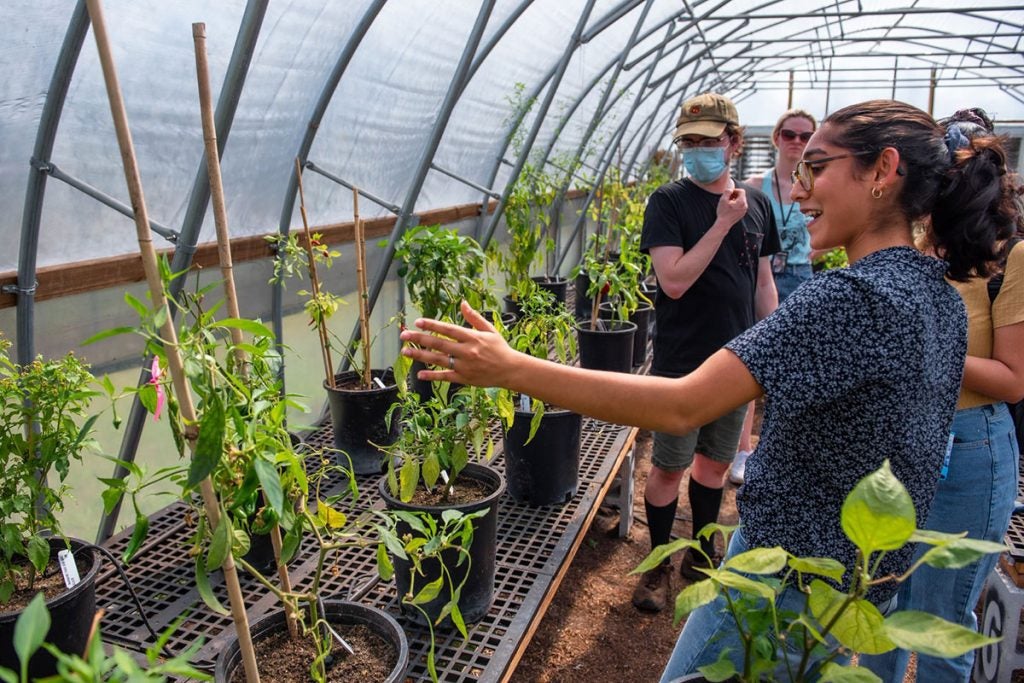
UCF students crossbreed select varieties of peppers in the hoop houses, which is part of the Department of Biology’s Plant Breeding Initiative, on main campus. (Photo by Kyle Martin)
Feeding Agendas
Agriculture and science have always worked hand in hand. Without the natural partnership, famines over the millennia could very well have wiped out the populations of entire continents. As one researcher points out, “People too easily forget what could have been.”
Today we’re faced with “what could be.” According to the U.N., between 702 million and 828 million people globally face food insecurity, and the number of undernourished people is back on the rise. Worse, there’s only so much fertile land left to use. Forests have already become fields. Wetlands have become farmlands. Organic food growing has a nice aesthetic, but typically it requires more land and water to produce the same amount of food, and it’s vulnerable to climate extremes. For most consumers, especially those in the lower and middle income brackets, organic foods are also too expensive.
Another fact to consider: Organic food is a $61 billion industry. Its most vocal advocates are also the most open critics of GMO and CRISPR science. Some observers wonder, however, why they wouldn’t at least entertain conversations about technology that would allow farmers around the world to grow more nutritious foods on less land while using less fuel, less irrigation and fewer chemicals.
The U.S. Agency for International Development isn’t waiting for a public consensus. It’s already introduced genetically engineered staple crops in countries where food shortages are prevalent. Eggplant is now thriving in Bangladesh. Cassava, potatoes and black-eyed peas are reliable food sources in African nations.
Yet even those encouraging outcomes open more questions.
“There are a lot of players involved — governments, corporations and everyday citizens,” Sadri says. “What are their motives?”
From Farms to Whose Tables?
Beatriz Otero Jiménez doesn’t remember much of the sugarcane fields that once occupied so much of Puerto Rico’s landscape. Her grandfather made a living from the cane harvests until companies moved production off island. Farming in general declined, and so did self-sustenance. Today, less than 15% of the food consumed in Puerto Rico is grown there.
“It concerns me,” says Otero Jiménez, a postdoctoral scholar who teaches an honors seminar on food systems at UCF. “The island is susceptible to a supply interruption, which could be catastrophic.”
Otero Jiménez says there’s enough food being produced worldwide to meet the needs of the world population. She doesn’t question the science. She questions who controls it.
“The technology and the seeds developed from it are owned by a handful of companies,” Otero Jiménez says. “What’s their goal? Is it to make healthy food accessible to everyone? Is it to provide local farmers what they need to grow food locally? Or is it strictly to produce more cash crops for profit?”
“New technology should be available to all participants in the food chain, and not just corporations.”
In the U.S. more than 90% of corn, soybeans and cotton are GMO crops. While grains account for most of our caloric needs, large-scale farms also reap government subsidies from the surplus that’s used for textiles, livestock feed, oils and ingredients to make processed foods.
“The technology doesn’t translate to better access to healthy food, like broccoli and squash,” Otero Jiménez says. “Like I said, we’re currently producing enough food. So why are people still hungry and getting chronically ill?”
Instead of pushing for GMOs to totally disappear, she’d like to see more transparency in the end game.
“New technology should be available to all participants in the food chain, and not just corporations,” Otero Jiménez says. “Right now, there are too many obstacles between the technology and the table.”
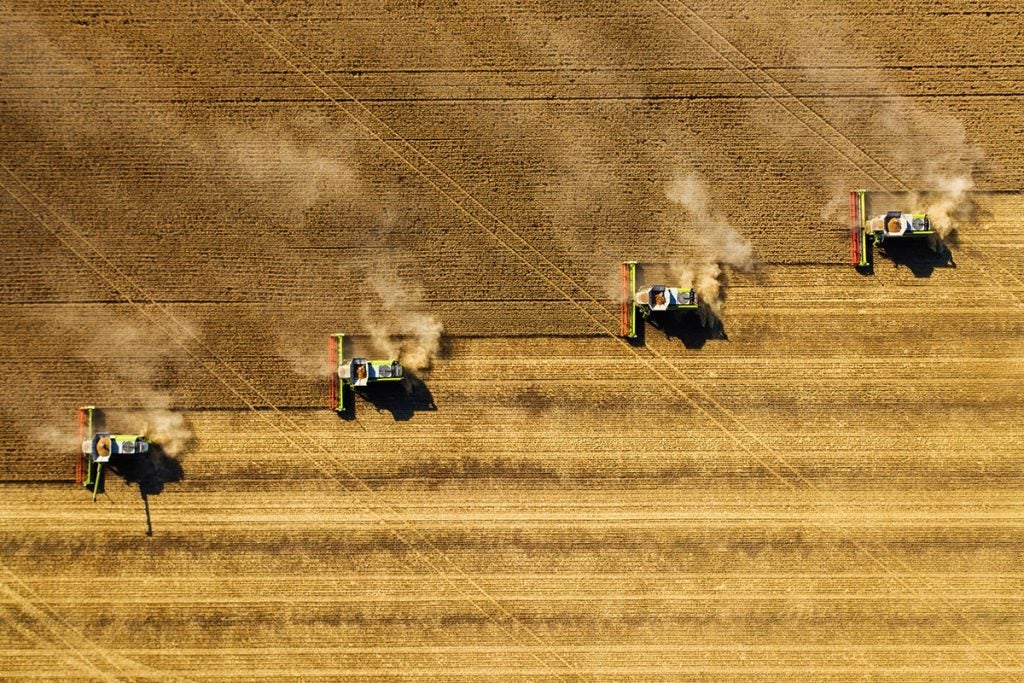
Circling Back to the Garden
Even on cloudy days, a blossoming garden serves as a foreshadowing of bright. possibilities. A place where seeds of doubt are replaced by seeds of hope. Those seeds are in the hands of anyone with a massive field or a sliver of dirt. They’re distributed from Haines City, Florida, to Haiti, from Kansas to Kenya. From those seeds, healthy food grows with certainty. Pests and extreme weather are easy to combat. Every growing season is bountiful. Food insecurity around the world shrinks. Wetlands and forests expand.
In the U.S. more than 90% of corn, soybeans and cotton are GMO crops.
It’s a place where there’s a commingling of organic food, natural selection, GMOs and CRISPR.
“We can only get to a place like that with science,” says one researcher.
Science begins with questions. So, let’s take a breath and end with two researchers, that if it were safe, would like to ask: Can we at least have truthful conversations? Let’s talk about organic foods, crossbreeding and GMOs. Because, really, what are we afraid of?
